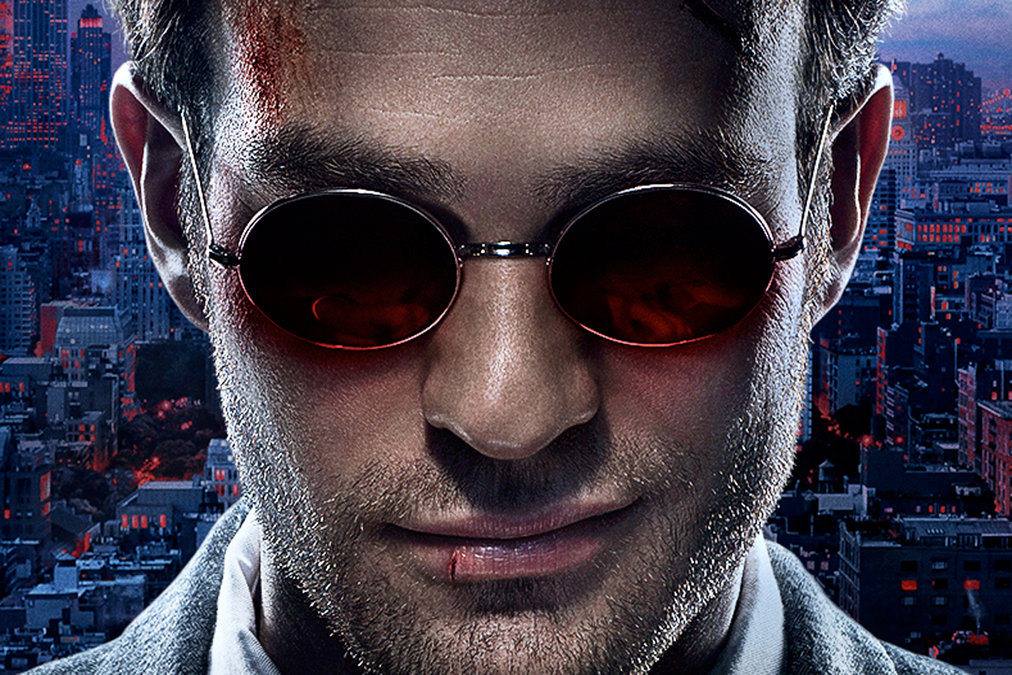Daredevil faced an uphill struggle as it returned for its third outing. Not only would this be marking Matthew Murdock’s first return to the screen since 2016’s lacklustre miniseries The Defenders, but it was also being released following announcements that both Luke Cage and Iron Fist were being cancelled after just two seasons. With Marvel shows dropping like flies, the question loomed large of whether the Devil of Hell’s Kitchen could prove why he was the first of the heroes to dominate Netflix. And although it isn’t without its flaws, season three reminds us why Daredevil deserves as much screen time as it can get.
When we pick up the story, Matt is a shadow. Following his battle with The Hand and the death of girlfriend/ninja warrior Elektra, Matt finds himself undergoing an existential crisis. Questioning his faith, he nihilistically concludes: ‘I would rather die as the devil than live as Matt Murdock’- words which establish the ominous tone this series adopts, as Matt contemplates sacrificing his moral compass. This is an interesting place to take the blind lawyer, since previously he had been adamant that his heightened senses were God’s gift, enabling him to answer the cries of those in need. And with Vincent D’ONofrio’s Wilson Fisk back in the fold, Daredevil’s morality is truly put to the test.
The problem with Daredevil’s path of exile is that Matt, Foggy, and Karen barely share the screen, and their absence is felt. They are the heart of Daredevil, but it often feels like our main characters have been sidelined. As a result, we are also significantly deprived of Matthew Murdock. It feels as though Matt’s story is no longer the priority, since there isn’t a whole lot for him to do but mope and speak to imaginary projections of Fisk and his father (a conventional narrative trope that doesn’t feel like a match for the tone of this show) while he debates whether to permanently put an end to Fisk. While this allows other characters like newcomers FBI Agent Nadeem and Ben Poindexter to grow, it reduces our emotional engagement with the core trio. That being said, this isolation allows each character some memorable scenes, particularly the long awaited delve into Karen’s past, and also a chilling encounter as she meets Fisk for the first time.
The small screen has always been able to do justice to Marvel’s villains (Kilgrave, Bushmaster and Billy Russo to name but a few). Wilson Fisk however, was undeniably the trendsetter. One of the biggest successes of the first season, Kingpin is now back at the top of his game, complete with his classic white suit, providing the needed boost to bring Daredevil’s internal conflict to a head. Here we see a different side to the villain, who for the majority of the season is cooped up inside a penthouse suite, letting his machiavellian schemes unfold whilst he towers over Hell’s Kitchen. While still an undeniable presence, Fisk does not feel as menacing. Despite twists and turns revealing just how patient and thorough his plans are, Fisk’s involvement in the criminal networks feels less imposing because of how his setting rarely shifts.
Flaws aside, season three is still mind-blowingly good. One of the biggest appeals of this show is it’s action sequences. Here they grow both in scale and sheer technical achievement. In season one we got the hallway, in season two the stairwell, and this time round, we get a truly breath-taking piece of cinematic choreography. After Matt breaks into a prison, an eleven-minute long tracking shot ensues, incorporating fighting, talking, rioting, and escaping, whilst never losing any of its gruelling intensity. Also amazing are the clashes between Matt and Bullseye, with the choreographers matching each character to a style, so while Bullseye has the advantage from a long range, Matt gains the upper hand in close-combat.
The performances continue to impress, with Charlie Cox building on Matt’s spiritual torments and giving him new vulnerabilities to express. Similarly, Wilson Bethel excels at giving Bullseye the sense of an insecure outcast, manipulated to Fisk’s side. These raw performances are what makes the final run of episodes so effective, giving each character stakes that collide, but are still rooted in individual endgames. As Fisk, Daredevil and Bullseye come to blows in Kingpin’s penthouse, we get to see this primal brutality fully unleashed. It is here that Cox truly goes for it, and the satisfaction when he refuses to kill Fisk and boasts ‘I BEAT YOU’ is definitely a highlight of the series. Regardless of where the show goes from here, season three is a tight, well-paced narrative that may drag at points, but is worth it for the payoff.



